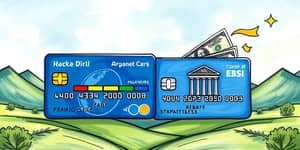Facing unexpected bank charges can be stressful and discouraging. By understanding overdraft fees and adopting proactive strategies, you can protect your finances, maintain a healthy account balance, and avoid unnecessary costs.
Definition and Mechanism of Overdraft Fees
An overdraft fee is a charge imposed when you spend or withdraw more money from your checking account than is available, resulting in a negative balance. In essence, your bank steps in to cover the shortfall, but you must repay both the overdrawn amount and the associated fee.
Common triggers include debit card purchases, ATM withdrawals, automatic bill payments, checks, or ACH transfers. For example, if you have $75 and make a $100 purchase, the bank may approve the transaction, advance the extra $25, and then levy a fee—often larger than the shortfall itself.
How Banks Handle Overdrafts and NSF Fees
Banks offer different approaches to handling overdrafts:
- Overdraft coverage: The bank pays the transaction and charges an overdraft fee.
- No coverage: Transactions exceeding your balance are declined, sometimes with a separate nonsufficient funds (NSF) fee.
Opting in for overdraft protection on debit card and ATM transactions allows these fees to apply; without it, the bank typically rejects these transactions. However, for checks and ACH transfers, you may incur fees even if you haven’t enrolled.
Why Overdraft Fees Matter
Overdraft fees are often labeled “junk fees” due to their high cost relative to the overdrawn amount. They can quickly erode savings and plunge accounts deeper into negative balances, triggering additional fees and even closure if not resolved.
Despite consumer outcry and some banks reducing or eliminating fees, approximately 94% of checking accounts still impose overdraft charges. In 2024, the average fee rose to $27.08 per incident, highlighting the importance of vigilance in managing your account.
Practical Strategies to Avoid Overdraft Fees
With careful planning and the right tools, you can shield yourself from costly bank charges. Consider these actionable steps:
- Opt out of overdraft coverage to ensure transactions are declined before incurring fees—though checks and ACH may still carry NSF charges.
- Monitor balances through mobile apps or email and text alerts, keeping you informed in real time.
- Link your checking account to savings or a secondary account for automatic overdraft protection transfers at a lower cost.
- Use prepaid debit cards, which decline transactions that exceed the loaded balance, preventing overdrafts entirely.
- Maintain a small buffer or minimum balance—consider it an emergency reserve for peace of mind.
- Contact your bank promptly if an overdraft occurs; some institutions waive the first fee for customers in good standing.
The Pros and Cons of Overdraft Protection
Linking accounts or enrolling in protection programs can seem appealing, but it pays to weigh the benefits against potential drawbacks:
- Pros: Prevents declined transactions, avoids missed payments, and may cost less than standard fees when linked to your own funds.
- Cons: You can still incur charges, and prolonged negative balances can invite additional fees, account restrictions, or even closure.
Industry Trends and Regulatory Landscape
In recent years, regulators and consumer advocates have pressured banks to curb excessive overdraft fees. Some financial institutions have responded by introducing fee-free checking accounts or lowering their charges.
However, a proposed Consumer Financial Protection Bureau rule to cap overdraft fees was overturned, leaving policy enforcement to individual banks. Fees, caps on daily charges, and account requirements can differ widely, so it’s crucial to review your bank’s current terms.
Conclusion
Overdraft fees can create a cycle of debt and stress, but by understanding how banks apply these charges and taking proactive measures, you can maintain control over your finances. From opting out of coverage and setting up alerts to choosing fee-free accounts, there are multiple paths to protect your hard-earned money and avoid surprise bank fees.
Take action today: review your account settings, explore alternatives, and build a small cushion to keep your balance in the black. With awareness and planning, you can steer clear of overdraft fees and achieve greater financial stability.
References
- https://www.pnc.com/insights/personal-finance/spend/what-are-overdraft-fees.html
- https://www.nerdwallet.com/article/banking/overdraft-fees
- https://www.bankrate.com/banking/checking/what-is-an-overdraft-fee/
- https://www.investopedia.com/terms/o/overdraft.asp
- https://www.bankrate.com/banking/checking/overdraft-fees-vs-nsf-fees/
- https://www.regions.com/insights/personal/article/understanding-overdraft-fees
- https://www.experian.com/blogs/ask-experian/how-does-overdraft-protection-work/
- https://www.experian.com/blogs/ask-experian/what-are-overdraft-fees/










